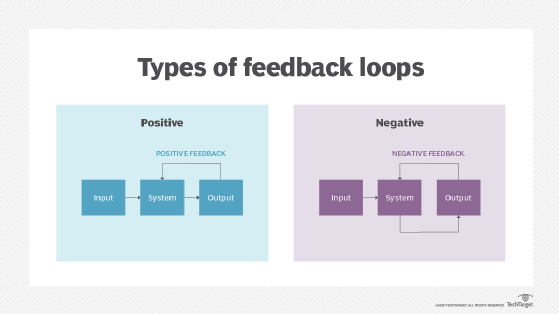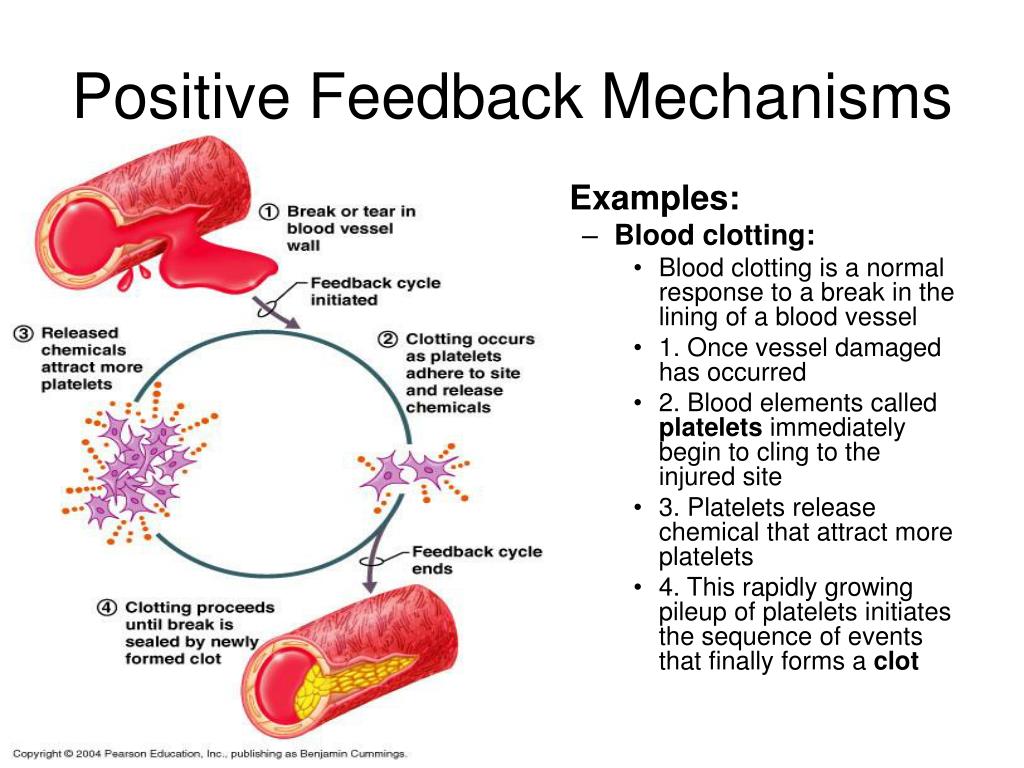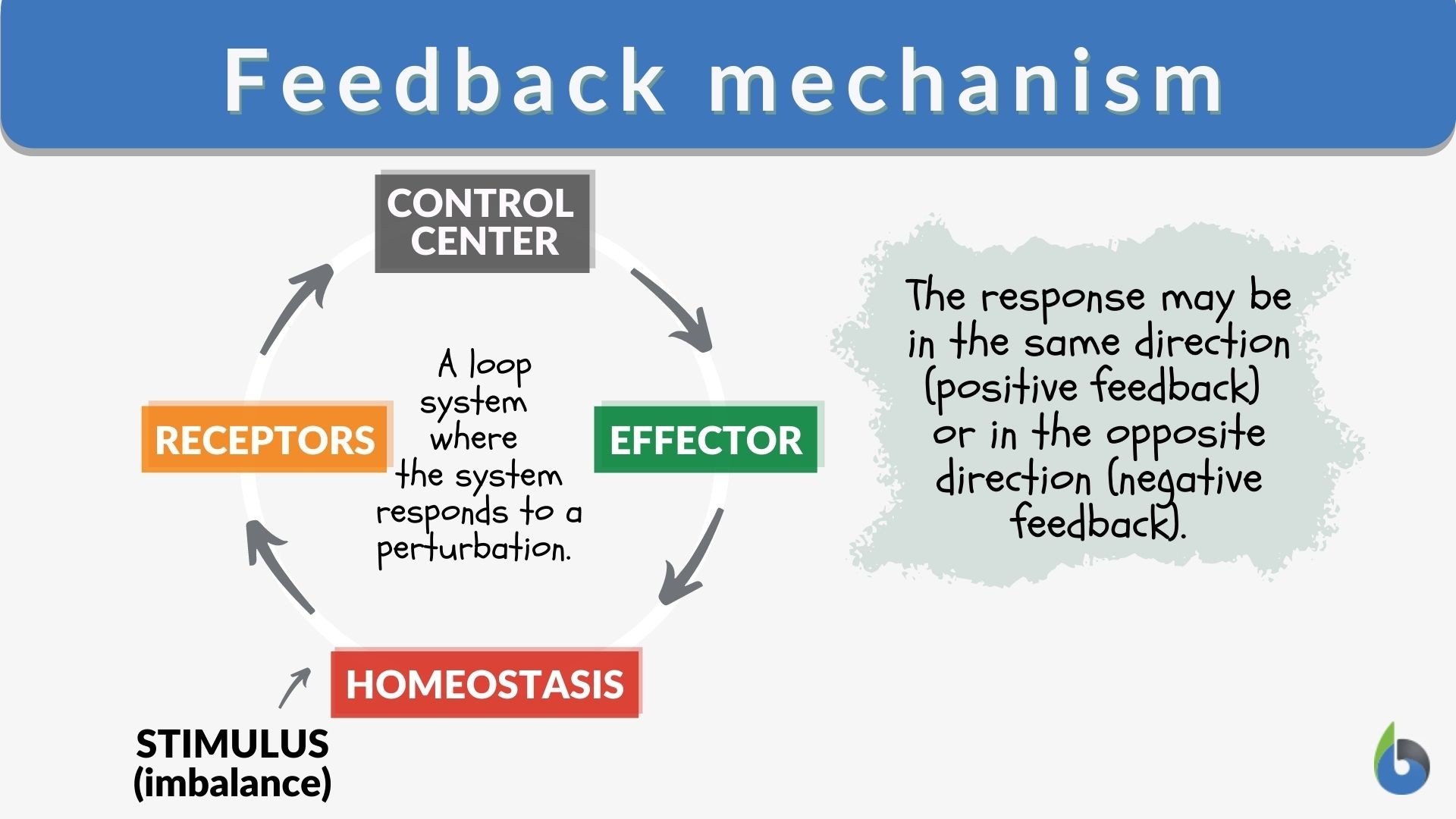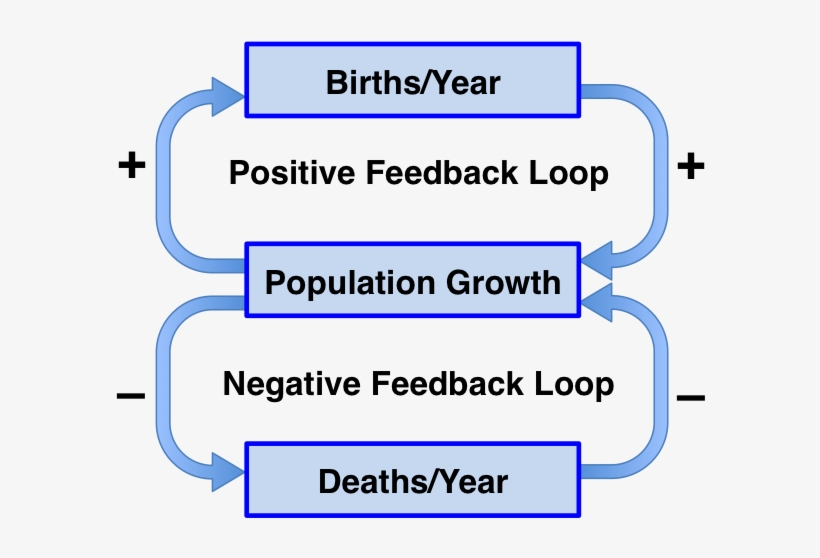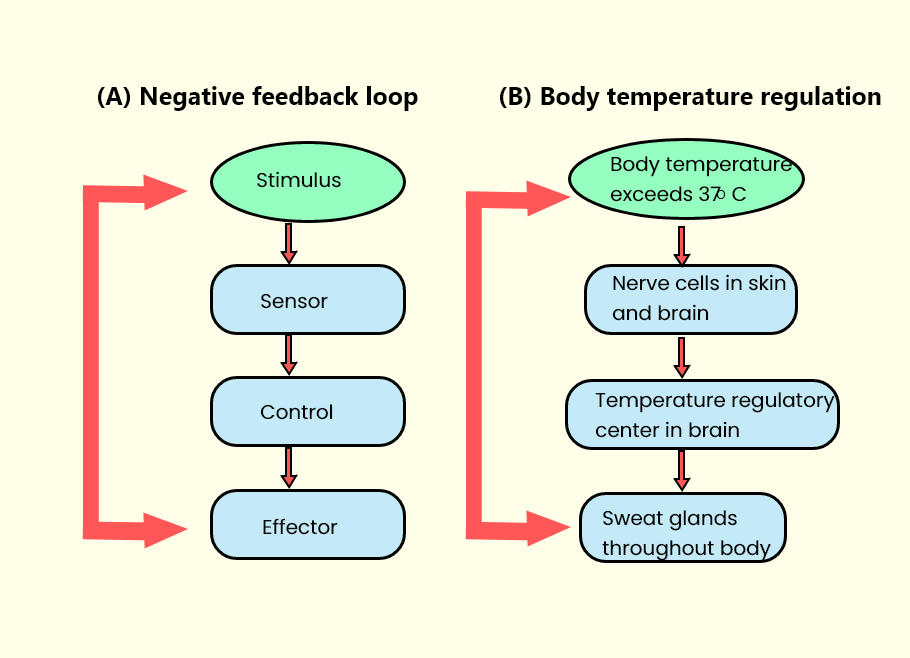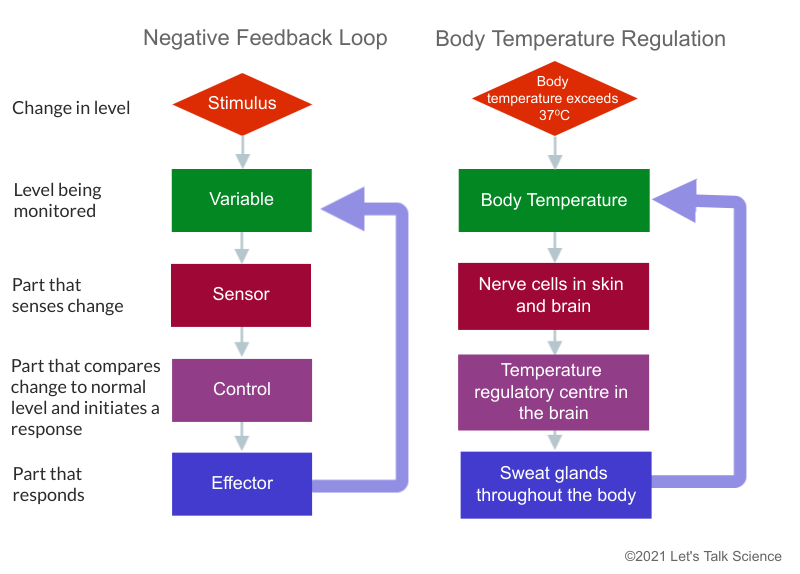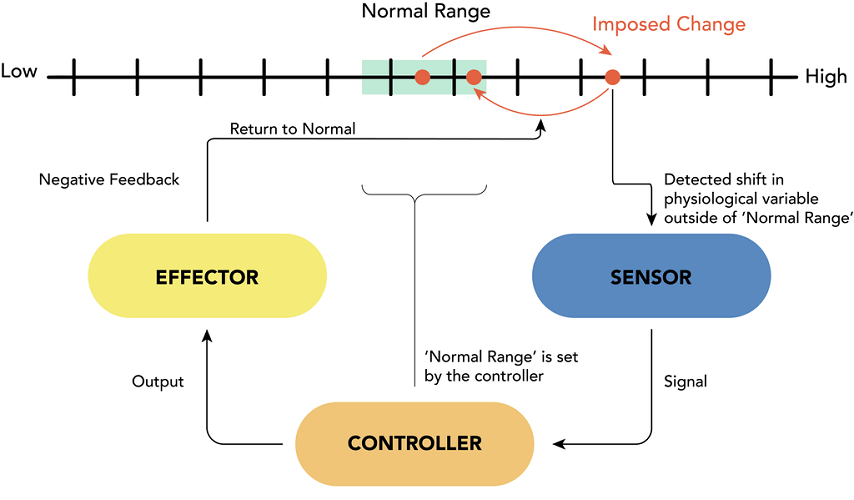Which Of The Following Describes A Positive Feedback Loop
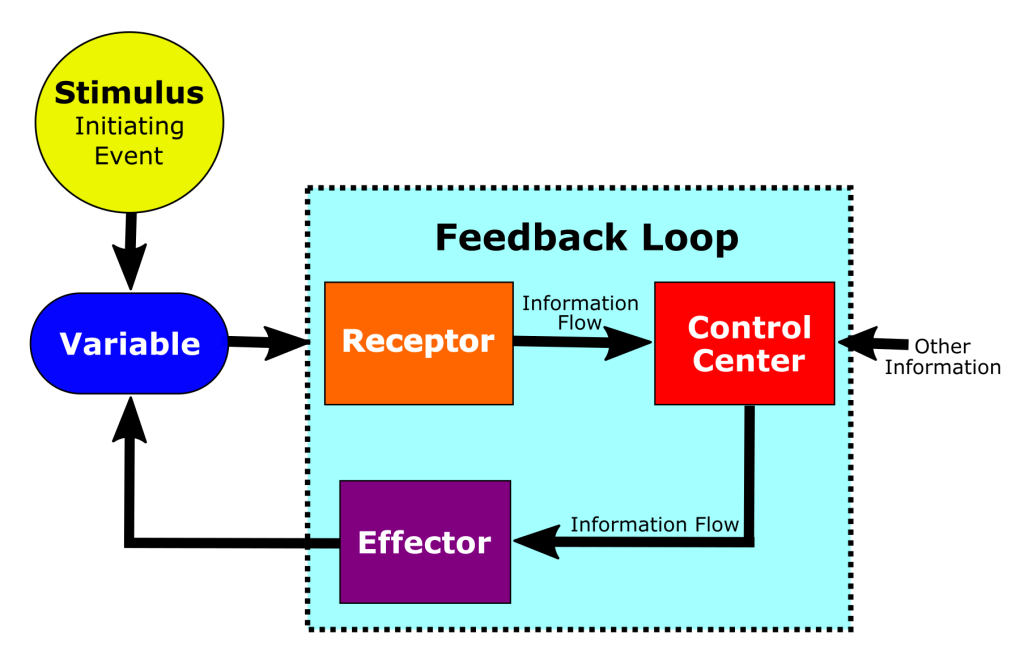
Imagine a snowball rolling down a hill. It starts small, almost insignificant, but as it gathers momentum, it accumulates more snow, growing larger and faster with each rotation. This accelerating process, where the effect amplifies the cause, is a vivid illustration of a concept that governs everything from our bodies to our planet: a positive feedback loop.
At its core, a positive feedback loop is a self-reinforcing system where the output of a process influences its input, leading to exponential growth or decline. While the term might sound inherently good, it's crucial to understand that 'positive' here simply means amplifying, not necessarily beneficial.
Understanding Feedback Loops: A Deeper Dive
To truly grasp the concept of a positive feedback loop, we need to understand it in the broader context of feedback mechanisms. Generally, systems strive for stability, and they achieve this through feedback. There are two types of feedback:
Positive feedback amplifies change, pushing a system further away from its initial state. Negative feedback, on the other hand, dampens change, bringing the system back towards a stable equilibrium. Think of a thermostat regulating room temperature – that's negative feedback in action.
The term "positive" in positive feedback refers to the addition of a signal or effect, not its inherent value. It can lead to runaway effects, both constructive and destructive, depending on the context. It is vital to remember this context.
Examples in Nature and Beyond
Positive feedback loops are abundant in nature. One classic example is childbirth. As the baby's head presses against the cervix, it triggers the release of oxytocin.
Oxytocin stimulates uterine contractions, which in turn further push the baby against the cervix, leading to even more oxytocin release. This cycle continues, with each contraction amplifying the next, until the baby is born.
Another critical, but potentially dangerous, example is the melting of Arctic sea ice. As global temperatures rise, sea ice melts, exposing darker ocean water. Darker water absorbs more solar radiation than ice, leading to further warming and more ice melt.
This creates a vicious cycle, a positive feedback loop that accelerates the warming of the Arctic. Data from the National Snow and Ice Data Center (NSIDC) show a clear trend of declining Arctic sea ice extent, highlighting the impact of this feedback loop.
The Dark Side: Uncontrolled Growth and Collapse
While positive feedback can be essential for certain processes, uncontrolled positive feedback can lead to instability and collapse. In ecological systems, unchecked population growth can deplete resources, leading to a population crash.
In financial markets, a speculative bubble can occur when rising asset prices fuel further investment, driving prices even higher until the bubble bursts. The 2008 financial crisis is considered to be caused by similar mechanisms.
These examples illustrate the importance of understanding and managing positive feedback loops, especially in complex systems. It can spiral quickly, as demonstrated by the events of the past.
Recognizing a Positive Feedback Loop: Key Indicators
So, how do you identify a positive feedback loop in action? Here are a few telltale signs:
- Exponential Growth or Decline: The system exhibits a rapid and accelerating change.
- Self-Reinforcement: The output of the system influences its input in a way that amplifies the original change.
- Instability: The system moves further away from its initial state and may reach a tipping point.
Looking for these characteristics can help you recognize a positive feedback loop in various contexts, from personal relationships to global events.
Climate Change: A Cascade of Positive Feedback Loops
Perhaps the most pressing challenge humanity faces is climate change, and unfortunately, it is riddled with positive feedback loops. The melting of permafrost is one of the most concerning. Permafrost, permanently frozen ground, contains vast amounts of organic matter.
As permafrost thaws, this organic matter decomposes, releasing greenhouse gases like carbon dioxide and methane into the atmosphere. These gases trap heat, further warming the planet and accelerating permafrost thaw. This creates a significant feedback loop.
Deforestation also plays a role. Forests absorb carbon dioxide from the atmosphere, acting as a carbon sink. When forests are cleared, this carbon is released, contributing to climate change and reducing the planet's capacity to absorb future emissions.
The increased ocean acidification is another loop. As the ocean absorbs atmospheric carbon dioxide, it becomes more acidic. This acidification harms marine life, particularly shell-forming organisms, which further reduces the ocean's ability to absorb carbon dioxide.
Breaking the Cycle: Mitigation and Adaptation
Addressing the positive feedback loops driving climate change requires a two-pronged approach: mitigation and adaptation. Mitigation involves reducing greenhouse gas emissions through measures such as transitioning to renewable energy, improving energy efficiency, and promoting sustainable land use.
Adaptation focuses on preparing for the inevitable impacts of climate change, such as rising sea levels, extreme weather events, and food shortages. Both strategies are necessary to minimize the damage and build a more resilient future.
Furthermore, promoting a better understanding of these feedback loops can encourage responsible action, driving social and policy changes to protect the planet.
Positive Feedback in Social Systems
Positive feedback loops are not limited to the natural world; they also operate in social systems. Consider the spread of misinformation online. A false or misleading story gains traction, attracting attention and generating shares.
The more it is shared, the more people see it, further amplifying its reach and influence. This can lead to the rapid spread of false information, with potentially harmful consequences. This is known as a feedback loop.
Another example is the Matthew effect, where those who already have advantages tend to accumulate more, while those who are disadvantaged fall further behind. This can create a widening gap between the rich and the poor.
The Power of Viral Movements
Positive feedback can also be harnessed for positive social change. Social movements often rely on positive feedback to gain momentum. When a cause gains public support, it attracts more activists, donors, and media attention, further amplifying its message.
This can lead to significant social and political reforms. The key is to create an initial spark and then cultivate the positive feedback loop to drive sustained change.
The fight for racial justice and equality demonstrates how widespread public support for a cause can amplify the calls for justice, leading to powerful change.
A Call for Conscious Action
Understanding positive feedback loops is not just an academic exercise; it is essential for navigating the complexities of our world. By recognizing these self-reinforcing cycles, we can better anticipate their consequences and take proactive steps to manage them.
Whether it's addressing climate change, promoting social justice, or simply making informed decisions in our daily lives, a deeper understanding of positive feedback loops empowers us to shape a more sustainable and equitable future. The future depends on it.
As we move forward, let's remember the snowball rolling down the hill – a powerful reminder that small actions can have significant consequences, and that understanding these consequences is crucial for building a better world.
